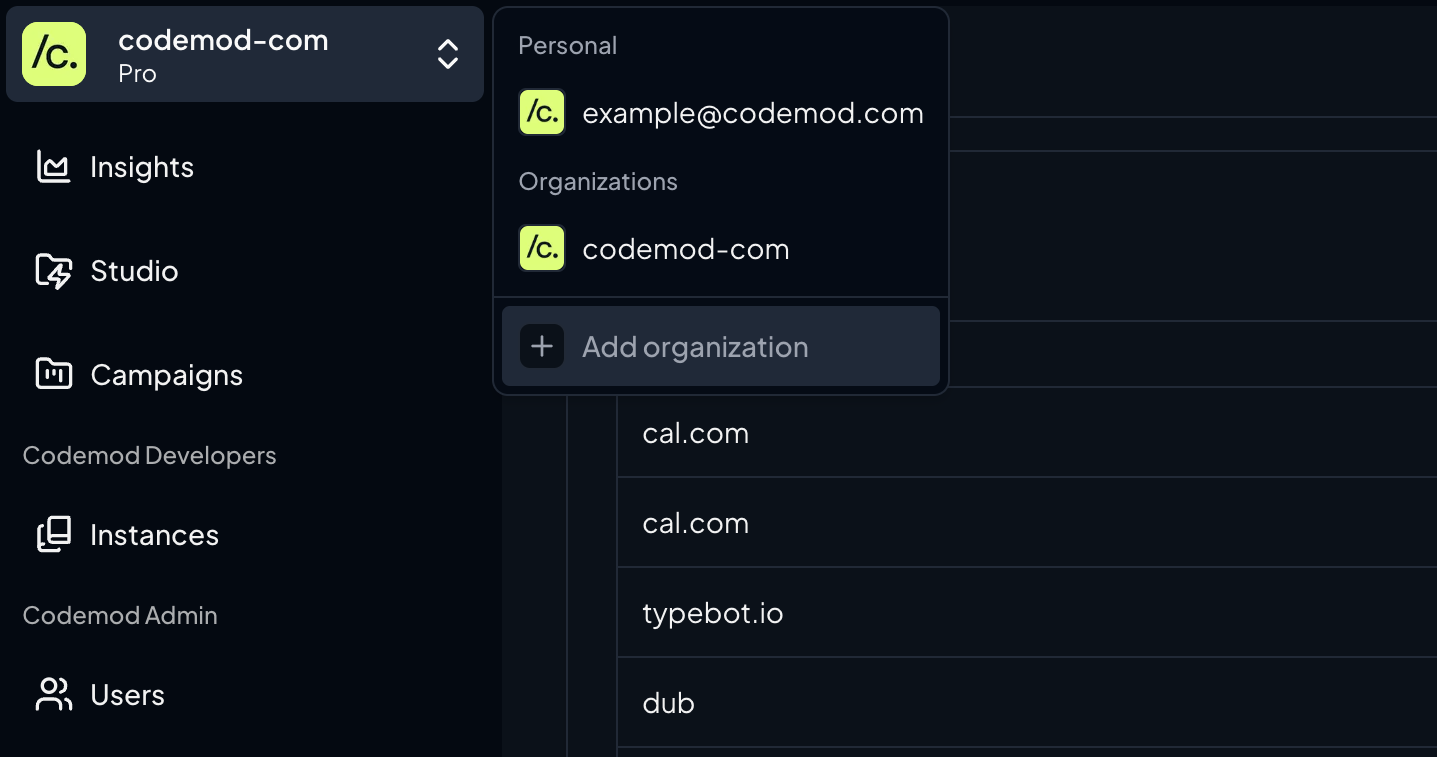What Codemod Helps You Solve
Codemod Platform enables large engineering teams to automate and orchestrate code transformations at scale. Common use cases include:Framework & library upgrades
Automate upgrades to newer versions of frameworks (React, Next.js, Vue, etc.) across your entire codebase with Campaigns and track adoption with Insights.
Security patches & compliance
Apply security patches and compliance fixes across multiple repositories simultaneously, ensuring consistent updates organization-wide.
API migrations & deprecations
Migrate from deprecated APIs to new versions by tracking usage patterns with Insights, then applying changes with Campaigns.
Internationalization (i18n)
Implement i18n patterns across your codebase using multi-step workflows to extract strings, configure translations, and update code patterns.
Tech unification after M&A
Standardize code patterns, module systems (CommonJS → ESM), and coding standards across merged codebases.
Dependency consistency
Maintain consistency across repositories, apply lint fixes, and perform other sweeping codebase-wide maintenance tasks.
Getting started
By the end of this guide, you’ll have:- Set up your Codemod organization with GitHub/GitLab integration
- Created a Campaign to orchestrate migrations across repositories
- Set up Insights dashboards to track progress
- Invited team members and configured permissions
1
Sign up and create your organization
Sign in to Codemod using GitHub, GitLab, or SSO.Then create an organization for your team:
- Click on the team switcher and select “Add Organization”
- Choose your Git provider (GitHub or GitLab)
-
Enter your organization details

2
Install the GitHub or GitLab App
Connect Codemod to your repositories by installing the integration:
3
Create your first Campaign
Campaigns let you orchestrate code transformations across multiple repositories with centralized tracking and state management.1. Choose a Codemod package:When creating a Campaign, you can select from several Codemod package options:2. Create a Campaign:
Pro codemods
Pre-built, enterprise-grade transformations available to Pro and Enterprise plan customers. These are tailored to your codebase by Codemod experts for complex use cases and patterns.
Build your own
Create your own custom Codemod package manually or with AI assistance using Codemod MCP or Codemod Studio.
Public registry
Browse and use community Codemod packages from Codemod Registry.
- Navigate to Campaigns → Create Campaign
- Select a Codemod package
- Choose target repositories
- Configure campaign parameters (if the package supports them)
- Click Run to start the Campaign
4
Set up Insights dashboards
Codemod Insights helps you track migration progress, identify modernization opportunities, and measure the impact of code transformations across your codebase.Create your first dashboard:
- Go to Insights → Create Dashboard
- Create a dashboard for a specific migration or initiative (e.g., “React 18 Migration”, “Security Updates”, “i18n Migration”)
- Add widgets to track patterns.
- Define queries using ast-grep YAML rules
- Generate rules easily with Codemod Studio
- Track patterns like API usage, deprecated patterns, or adoption metrics
5
Invite team members and configure permissions
Add team members to your organization to collaborate on migrations:
- Go to Organization Settings → Members
- Click Invite Members
- Enter email addresses and assign roles:
- Admin: Full access to organization settings and features
- Member: Can create and manage Campaigns, view Insights
- Viewer: Read-only access to Campaigns and Insights
Advanced Enterprise Features
Once you’re comfortable with the basics, explore these enterprise capabilities to scale your migrations:Private Registry
Publish organization-specific codemods accessible only to your team. Maintain internal codemods for proprietary patterns, standards, and company-specific transformations.Learn more: Codemod Registry
Advanced Campaign Features
Leverage powerful Campaign capabilities including parameter editing during runs, manual task approval gates, state management across multiple runs, and matrix strategies for parallel execution.Learn more: Building Workflows covers manual triggers, matrix strategies, state management, and parameters.
Project Management Integrations
Connect Jira to sync Campaign progress with your project management tools. Link Campaigns to Jira epics for unified tracking and bidirectional status updates.Learn more: Jira Integration